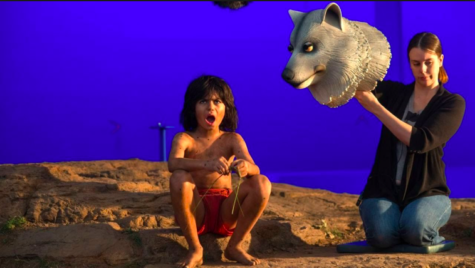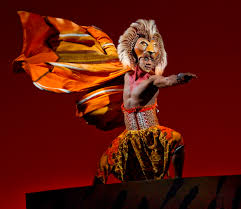For those who work in the theatre, the idea of defending the term “live action” would seem an unnecessary task. But as movie marketers, abetted uncritically by the entertainment press, seem determined to diminish the concept, it appears that a brief primer is warranted.
Live-action has, for many years, been a term reserved for that which actually occurs in real life, that is to say the activities of humans (and other animals). Whether performed on stage or captured on a camera, real people have been the central tenet of live action. In the theatre, while everything that surrounds people on a stage is by necessity a simulacrum of reality (and sometimes not even that), the presence of the actor grounds theatre in its “liveness.” The same has held true for most movies, even ones in which human action is assisted by tricks and tools (Superman flying; Jeff Goldblum transmogrifying into Brundlefly). Animated films were those which were understood to be drawn; in early years this was often quite rudimentary, and now it has become quite sophisticated, to the point that it’s becoming increasingly difficult to know where reality ends and digital imagery begins.
Why the compulsion to spell this out? Because of a series of films being released and planned by Disney, in particular. Following on their newest version of The Jungle Book, in which the only human actor – excluding voice actors – was the child playing Mowgli and as the newest version of the musical Beauty and the Beast approaches, Disney has announced what was widely described as a live-action version of The Lion King. With Donald Glover and James Earl Jones touted as starring, the latter “reprising” his role, the description of the film as live-action permeated the press, including CNN, Variety, Entertainment Weekly, BuzzFeed, Los Angeles Times and Time magazine, to name but a few. Even theatre-centric outlets like Theatremania and Playbill parroted this language.
While I am not privy to the conceptual work in connection with new The Lion King, I am prepared to guess that we will not see James Earl Jones in a lion suit ruling over an African savannah. What we will most likely get is a reasonably photorealistic lion with Jones’s magnificent voice. Perhaps motion capture will be used to allow Jones’s and Glover’s facial expressions to be mirrored in their semi-anthropomorphized state, though at age 86, I doubt Jones will be providing the sort of full-body motion capture that we know from the work of Andy Serkis. There has been a live-action Lion King for 20 years, by the way, staged by Julie Taymor.
Live action and animation have been blended virtually since the start of film. Walt Disney’s earliest success came with a series of short “Alice” films in which a real girl undertook adventures in animated worlds, though no one would have confused what was real and what was drawn. Over the years we’ve seen animated characters in largely live action films (from Gene Kelly dancing with Jerry the Mouse, Don Knotts submerged as Mr. Limpet, and certainly Who Framed Roger Rabbit, the apotheosis of this technique). Most of the Marvel superhero films since X-Men have made extensive use of animated settings, with actors shot on greenscreen and surroundings added later – and when we see Spider-Man swinging through Manhattan, we’re not watching Tobey Maguire or Andrew Garfield in advanced rigging, but rather an animated figure in both filmed and simulated settings.
One need only look at the Motion Picture Academy’s science and technical awards to understand how important this sophisticated animation is to the field. There were certificates described as follows: “The Viper camera enabled frame-based logarithmic encoding, which provided uncompressed camera output suitable for importing into existing digital intermediate workflows” and “Meander’s innovative curve-rendering method faithfully captures the artist’s intent, resulting in a significant improvement in creative communication throughout the production pipeline.” There were three separate honors for facial capture systems.
None of this is meant to diminish the films that employ these techniques or devalue them as entertainment. But as we reach a point where nothing onscreen ever existed anywhere but within computers as a massive series of 0s and 1s, it’s time to fight for the preservation of “live-action” as being something that retains the human, the biological, the corporeal. This is akin to the Champagne region of France wanting to insure that only sparkling wines made there can be called champagne.
The Jungle Book may have looked fairly real (perhaps even a hyper-realism), but unless The Lion King will be employing a wide range of well-trained, stunningly collegial bunch of wild animals whose mouths are animated (a la Babe, the sheep pig), then it’s time the entertainment media stop playing into this live action narrative. After all, no one ever pretended that King Kong or Bruce the Shark in Jaws were real, but they were grounded in the physical world (often by the limitations of technology), whereas now Kong is a highly sophisticated piece of digital animation in the new Kong: Skull Island, and crappily rendered sharks fall from the sky every summer on SyFy.
It’s especially important for theatre that this distinction be made, because if people come to accept and even believe that what they’re seeing on screen is reality, how can theatre compete without giving itself over to holograms? Mark my words. It’s coming. But for now, let’s hold on to the idea that live action still shows us beings that draw breath, not just in body or in voice, but in complete form. The movies need to come up with their own term. Let’s fight for live action as a brand. Because that’s what theatre is all about.









